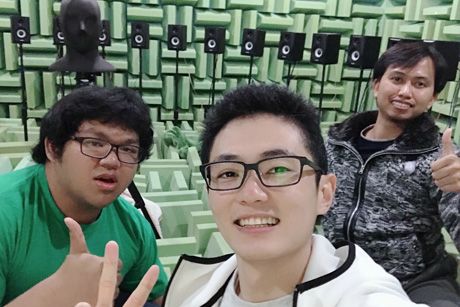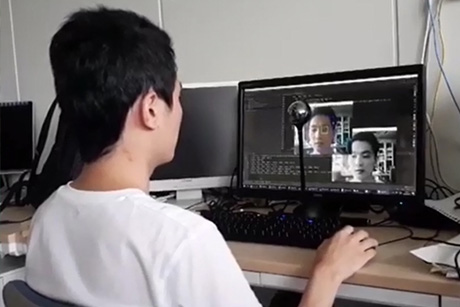Eye tracking is a series of techniques for estimating the place or direction that people look at. It could be used in computer games, intelligent control, e-learning, and other areas. With the development of Virtual Reality and Augmented Reality, eye tracking has become a popular research direction in recent years. However, most of the research focuses on tracking precision, using HD cameras to capture high-quality images of the users, assembling wearable devices with gyroscopes, or applying infrared devices to generate a high-precision tracking result. That leads to a high cost of applying this technique. Mitigating the cost of eye tracking is the urgent requirement for applying this technique generally. Therefore, we focus on developing a rough eye tracking system using a webcam as the main device. The cost of devices is considerably decreased. To overcome the limitation of the image quality, we developed the pupil detection method of self-training and pattern matching. To optimize the system and achieve a better precision under the limited conditions, we came up with the method of taking mouse clicks as the implicit calibration. Comparing with other research, our system is lightweight and low-cost, which is suitable to be applied for lightweight applications in human-computer interactions.

Working with friends in the laboratory (I am the one in the middle)

Testing our eye tracking system

